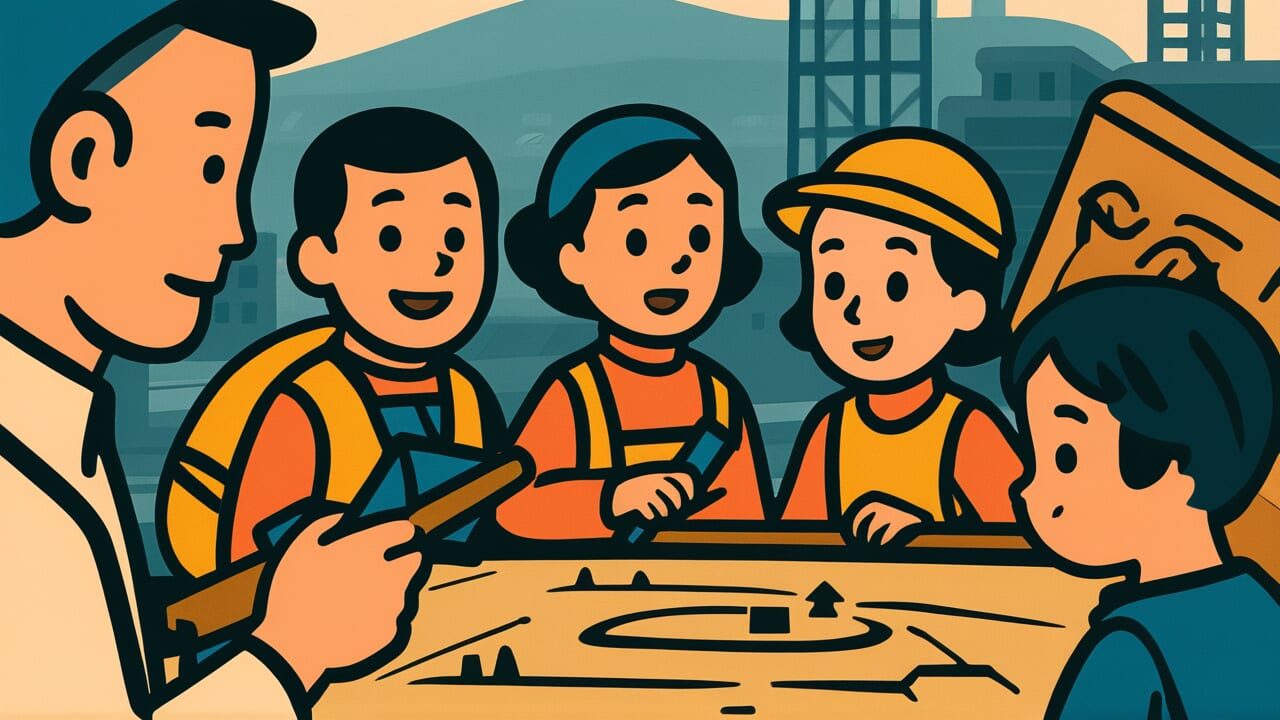How to Read “Fools and bairns should not see half-done work”
Fools and bairns should not see half-done work
[FOOLZ and BAIRNZ should not see HALF-done work]
“Bairns” is an old Scottish word meaning children.
Meaning of “Fools and bairns should not see half-done work”
Simply put, this proverb means that people without experience or understanding should not judge work that is still in progress.
The literal words paint a clear picture. “Fools” refers to people who lack wisdom or experience. “Bairns” is an old word for children. “Half-done work” means anything that is incomplete or still being finished. The message warns against letting inexperienced people see unfinished projects.
This wisdom applies everywhere in modern life. When someone is learning a new skill, their early attempts look messy and wrong. A half-built house looks like a disaster zone. A rough draft of an essay seems terrible compared to the final version. People without experience might panic or give up if they see these messy middle stages.
What makes this saying interesting is how it protects both sides. It shields inexperienced people from unnecessary worry or confusion. It also protects skilled workers from unfair judgment. The proverb recognizes that progress often looks like chaos before it becomes success. Only experienced eyes can see the potential in unfinished work.
Origin and Etymology
The exact origin of this proverb is unknown, though it appears to come from Scottish tradition. The word “bairns” points to Scottish or Northern English roots. Early versions of this saying likely emerged in communities where skilled crafts were passed down through generations.
During medieval and early modern times, craft guilds controlled most skilled work. Master craftsmen trained apprentices over many years. These workshops operated under strict rules about who could see work in progress. Unfinished pieces might reveal trade secrets or create false impressions about quality. The saying probably developed to protect both the craft and the craftsman’s reputation.
The wisdom spread as people moved between communities and shared practical knowledge. Similar ideas appear in various forms across different cultures. The core message remained the same even as the exact words changed. Over time, the saying expanded beyond physical crafts to include any kind of skilled work or learning process.
Interesting Facts
The word “bairn” comes from Old English “bearn,” meaning child or offspring. It survived mainly in Scottish and Northern English dialects while disappearing from standard English. This linguistic pattern shows how proverbs can preserve older forms of language long after they fade from everyday speech.
Usage Examples
- [Chef] to [kitchen assistant]: “Don’t let the customers see the prep area right now – fools and bairns should not see half-done work.”
- [Father] to [mother]: “Keep the kids upstairs while I’m fixing the fence – fools and bairns should not see half-done work.”
Universal Wisdom
This proverb reveals a fundamental truth about human learning and judgment. We naturally want to evaluate what we see, but our brains struggle with incomplete information. When we encounter something unfinished, we fill in the gaps with our own limited understanding. This creates false impressions that can damage both confidence and relationships.
The saying also exposes the delicate nature of skill development. Every expert was once a beginner who made countless mistakes. The messy middle stages of learning are necessary but vulnerable. During these phases, people need protection from premature judgment, including their own harsh self-criticism. The proverb recognizes that growth requires safe spaces where imperfection is expected and accepted.
At a deeper level, this wisdom addresses the tension between transparency and protection. Modern culture often demands complete openness and immediate results. But some processes cannot be rushed or exposed too early without damage. The proverb suggests that timing matters as much as truth. Sometimes the kindest and wisest choice is to wait before sharing or judging. This patience allows natural development to occur without the distortion that comes from premature evaluation.
When AI Hears This
Experts build invisible layers of knowledge around their work like scaffolding. They know which mistakes are normal and which signal real problems. They understand timing, context, and the natural messiness of creation. When outsiders see unfinished work, they miss this hidden framework entirely. They judge the surface without seeing the deep structure underneath.
This reveals how humans naturally protect their creative process from misunderstanding. We instinctively know that incomplete work tells a false story. Our brains want to judge what we see immediately. But experts understand that half-done work is like a sentence cut in half. The meaning only emerges when all the pieces come together properly.
What fascinates me is how this protective instinct actually serves learning. By controlling when others see our work, we create safe spaces for experimentation. This seemingly secretive behavior actually helps knowledge transfer happen better. The expert waits until the work can teach rather than confuse. It transforms potential criticism into genuine understanding through perfect timing.
Lessons for Today
Living with this wisdom requires recognizing when to shield others from incomplete work and when to shield ourselves from premature judgment. The challenge lies in distinguishing between helpful feedback and destructive criticism. Experienced guides can offer valuable input during the messy stages, while inexperienced observers often create more confusion than clarity.
In relationships and collaboration, this understanding changes how we share our struggles and progress. Rather than hiding all difficulties, we can choose our audience carefully. We might share early drafts with trusted mentors while protecting fragile ideas from harsh critics. This selective sharing creates space for growth while still allowing for meaningful input and support.
The wisdom also applies to how we judge others and ourselves. When we encounter someone’s unfinished work or early attempts, we can remember that completion often looks nothing like the beginning stages. Instead of rushing to evaluate, we can offer patience and encouragement. This approach builds confidence rather than destroying it, creating conditions where real improvement becomes possible. The proverb reminds us that timing and audience matter as much as effort and skill.



Comments